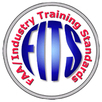FAA/Industry Training Standards (FITS)
 In an effort to address the causal factors associated with many GA accidents, as well as the introduction of new cockpit technologies, the FAA has partnered with industry to develop the FITS program. FITS, or FAA/Industry Training Standards, offers a new approach to GA flight training, one that embraces concepts central to system safety. These include risk management, aeronautical decision-making, situational awareness, and single-pilot resource management. Instead of treating each element as a separate or stand-alone lesson, scenario-based training will be used to efficiently integrate these important concepts into every instructional exercise.
In an effort to address the causal factors associated with many GA accidents, as well as the introduction of new cockpit technologies, the FAA has partnered with industry to develop the FITS program. FITS, or FAA/Industry Training Standards, offers a new approach to GA flight training, one that embraces concepts central to system safety. These include risk management, aeronautical decision-making, situational awareness, and single-pilot resource management. Instead of treating each element as a separate or stand-alone lesson, scenario-based training will be used to efficiently integrate these important concepts into every instructional exercise.
To maximize the benefits of this program, FITS will focus on the segment of general aviation that uses single-pilot, small reciprocating or turbojet/turbofan-powered, technically advanced aircraft for personal transportation. While FITS may offer advantages beyond this narrow scope, the justification for this focus is clear. Air carriers and larger, crew-served corporate operators currently have in place extensive training requirements. In addition, these communities enjoy a record of safety that is unsurpassed. While operational and regulatory differences pose unique challenges for GA, statistics have shown that structured, scenario-based training is the key to achieving the high level of safety enjoyed by the airlines and larger corporate operators.
